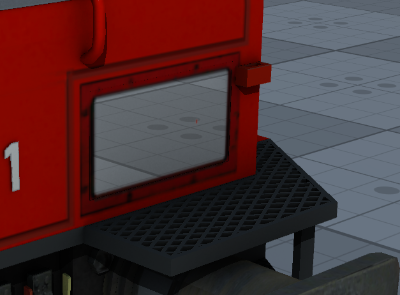Sometimes the 3d import of models does not work as expected. This document highlights some common import issues from 3d modelling software and how to solve these problems.
 Some complex objects may have the problem that child nodes are not rendered correctly in order, even if they exist. To solve that problem, multiple solutions exist:
Some complex objects may have the problem that child nodes are not rendered correctly in order, even if they exist. To solve that problem, multiple solutions exist:
The simplest solution is to go to the import configuration and to disable the "Optimize the graph" option. If you re-import the 3d model, the problem should be gone. The negative side is, the shape contains many more child nodes as required. This may impact the performance.
The more advanced solution is by working on the model: cut the geometry region which is responsible for the issue (here the glass) and detach the surface from the geometry. Now, create a copy of the used material and apply it. Next, make the inner children objects of the glass as the children of the glass object. The glass object is a child of the original node. If you re-import the 3d model, the problem should be history.
For scripting or plug ins, some nodes are required for features. In the case your 3d model does optimize some required nodes away, disable the "Optimize the graph" option. This may apply in most cases for rail vehicles.
Enable the "Has Opacity" in the material flags or in the node flags.
Select a matching color space in the import configuration window.
Did you export the Shape Description and does the file name match?
Some required textures are not found.
Train Simulator NEXT tries to auto-import the maps as possible. The textures need to be in the Textures/ directory. Seasoned textures are not automatically imported. If all does not help, import the textures manually by draggin the source files onto the makeMap tool.